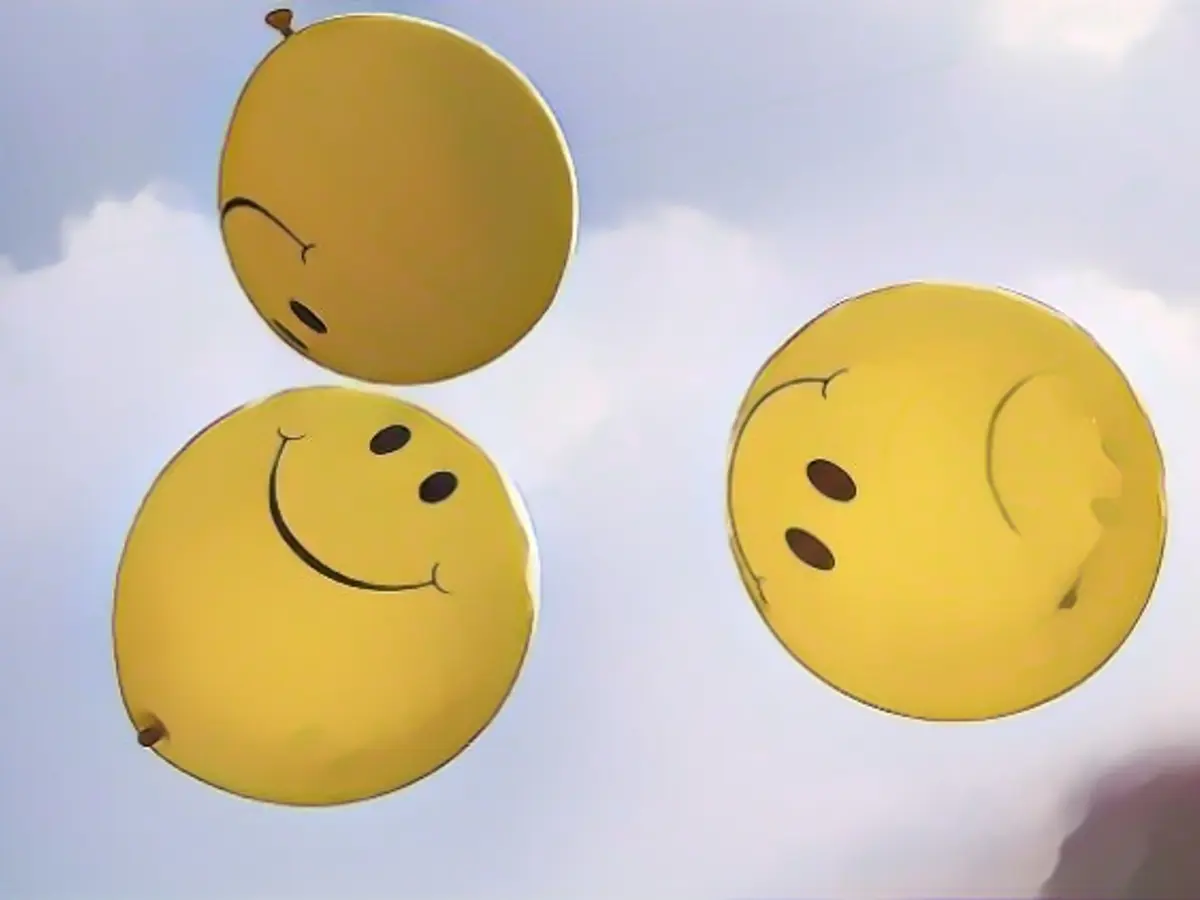Smiley started in insurance companies
When we hear the word smiley, almost everyone immediately has the image in mind: a yellow face with dotted eyes and a broad smile. It's hard to believe, but the smiley is not an invention of the digital world.
A yellow circle, two dots and a semicircle inside - and the world-famous smiley is born. Inventor Harvey Ball doesn't want a lot of bells and whistles, and he doesn't think a nose is necessary. Since the birth of this idea 60 years ago - the exact date of its invention is not known - the symbol has been printed on album covers, T-shirts and mugs. Providers of communication apps are still inspired by the design today. Despite its popularity, the inventor only receives a small fee.
A few facts about the smiling yellow face to mark the anniversary: In 1963, freelance artist Harvey Ball was commissioned to design a smiling face for an insurance company. This was to be printed on badges, cards and posters. The aim is to make employees laugh while they work.
Ball gets to work. He draws a circle, paints it yellow and puts two dots, the eyes, and a semi-circle, the mouth, in it. Less than ten minutes later, the smiley is finished. A huge success for little money: the company distributes 100 smiley face badges to its employees. The yellow face is well received. The company therefore orders another 10,000. By 1971, more than 50 million had been sold. The smiley becomes a globally recognized symbol.
And what did inventor Ball get out of it? Financially at least, not that much. He never registered a trademark or copyright for the design. For the entire campaign, he only received 240 US dollars (the equivalent of around 223 euros today) and had no share in any further profits.
Helping people to smile
There are now countless products to buy with the face: from mugs and T-shirts to bed linen. Bands such as Nirvana use the smiley face in a slightly modified form as a kind of logo, and many people immortalize it as a tattoo on their skin.
Harvey Ball founds the company World Smile in 1999. Among other things, it organizes World Smile Day - World Emoji Day. On this day, money is raised for the Harvey Ball Smile Foundation, which campaigns for child welfare. This day takes place annually on the first Friday in October and the motto is: "Do something good - help someone smile".
Not round and not yellow, but smiling nonetheless, a smiley face appears on a 4000-year-old clay jug. Researchers excavated the jug from the Hittite period in Karkamis, Turkey, near the Syrian border. It features two eyes and a curved mouth. The find is considered the oldest smiley so far. As lead archaeologist Nicolò Marchetti noted in 2017, the jar was intended for a sweet fruit drink.
As early as 1862, readers of the "New York Times" can probably find a smiley in the form of ";)" in the newspaper for the first time - in an article about a speech by President Abraham Lincoln. A typo? Experts note that newspaper texts at the time were typeset from individual matrices - so the possibility of carelessness can actually be ruled out. Historians examine how semicolons and spaces were used in the mid-19th century. There is no consensus as to whether the Lincoln text is really a wink.
Read also:
- Snow chaos further restricts Bavaria
- Unanimous decision: faster wolf culls possible
- The year of climate records: extreme is the new normal
- Snow and ice paralyze southern Germany
In the digital advertising world, the smiley face has become a widely used emoji, representing happiness and positivity. The International Smile Foundation, a global organization dedicated to improving children's lives, often uses the smiley as their symbol.
In the USA, various companies and brands have utilized the smiley face in their marketing strategies, including the popular music group Nirvana, who incorporated a modified version of it as their logo.
Source: www.ntv.de






